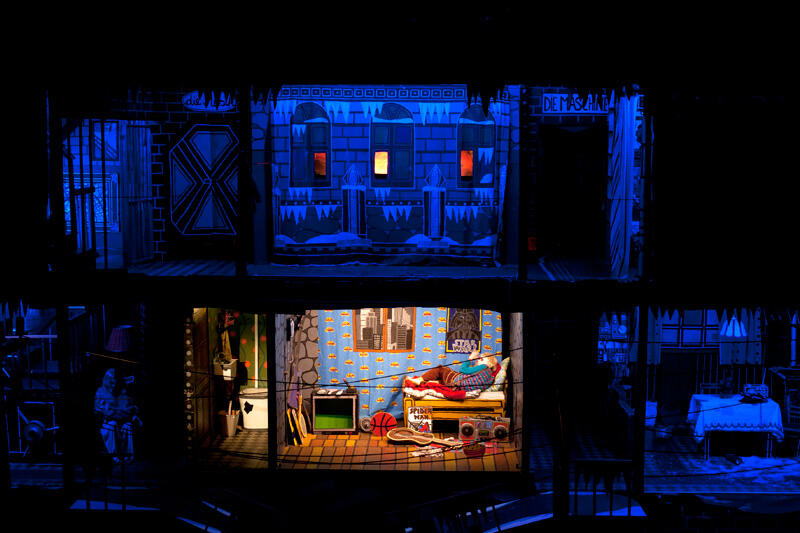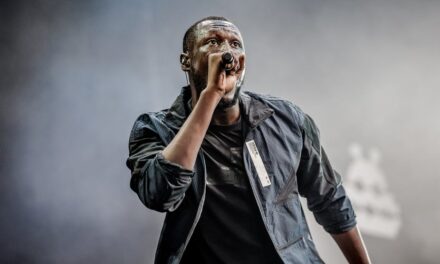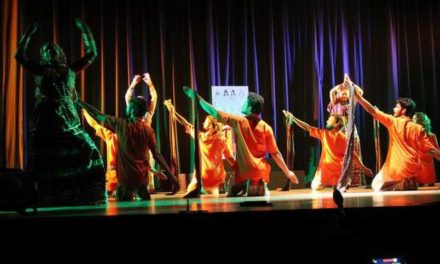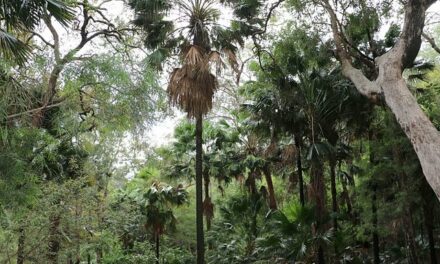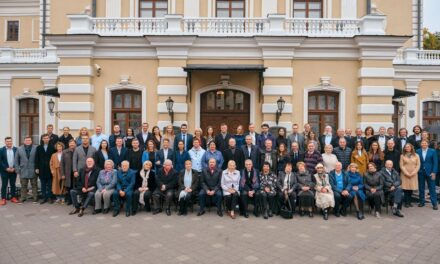The independent theatre companies have at all times been champions for developing new texts for the theatre, through staging contemporary drama and through developing texts in the process of production. Anne-May Nilsen was a burning soul in this for many years. Among other things, she started the workshop project Det Åpne Teater (The Open Theatre) in 1983. Nilsen wanted to create a counterpoint to the inflexible attitudes concerning use of drama on Norwegian stages. At the time the theatres mainly staged Ibsen and international classics, plus international contemporary drama already succeeding abroad. The workshop model provided an option for the playwrights to test and discuss their plays (including plays already refused by other theatres) in workshops and open readings with actors and directors. Det Åpne Teater was the first and for long the only workshop theatre in the Nordic countries for new drama. In 1986 the three-year project was remade a foundation, and in 2010 Det Åpne Teater transformed into Dramatikkens Hus (literally: The House of Drama); a national competence and development centre for stage texts.
The 1990s
During the 1990es individualism flowed over Norway. Artistically and organisationally, the collective mindset fell apart – now the individual was to realise him/herself. This spread to the theatre as well; individual artists’ ideas, visions and creativity became the central part of developing performances.
In 1998 the field of independent performing arts again experienced political reform regarding governmental culture funds. Arts Council Norway’s support to manage companies ceased and all funds were assigned to singular projects. The following criteria had to be met to be assigned support: high artistic quality and artistic potential. Whether the project could signify potentially innovative work also had to be considered. The project theatre model had grown within the field of independent performing arts during the 1980es and 1990es, parallel to the increased number of artists within the field, and this was one of the reasons funding systems were changed. At the same time, the reform led to the project model becoming the working model of priority after 1998. The new system sought for artistry to a larger degree than before. The model also reflected the public view of the field; it consisted of actors and production units popping out and disappearing. This was later to be disproved by the companies, and the Ministry of Culture added that artists should be allowed to apply for project support over years.
The arrival of post-modernism in Norwegian contemporary theatre
During the 1980es and 90es, the artists began to realise the significance of globalisation. To a larger degree, they opened to the world outside of Norway, by travelling more and by reflecting other cultures and new information/communication channels in art. The growth of new festivals and project theatre nationally and abroad was a reason to as well as a consequence of the increasing internationalisation in Norwegian performing arts during the 1990es.
Post-modernism reached Norwegian avant-garde theatre widely during the 1990es. As a consequence artists reflected deconstruction and recycling in working models and aesthetics. Deconstruction we had encountered in a smaller number of artists and companies during the 1970es and 80es. During the 1990es, however, deconstruction was directed towards reconstruction. The artist deconstructed the classic, modernist and avant-garde theatre and their means of expression, to put them together (reconstructing) in new manners (making new compositions). We here refer to the traditional effects being given a return through new connections and compositions – a consequence of artists’ fundamentally carefree attitude to art tradition. Strategies, expressions and content from the rich reservoir of art tradition were shopped, processed and sampled. These strategies maintained the heritage and served it a generous helping of challenges. Theatre art develops in correlation to former art expressions, and being in dialogue with the contemporary age is among other things about understanding the past. This was what artists reflected in their works through recycling historic material. The artists mastering recycling were, in other words, tradition-conscious and rich in knowledge. There are long series of productions using recycling as
his was what artists reflected in their works through recycling historic material. The artists mastering recycling were, in other words, tradition-conscious and rich in knowledge. There are long series of productions using recycling as an artistic strategy, but I will here jump to 2004 – when the Norwegian audience was introduced to a work blowing the ground out of former recycling attempts. The production was Concert for Greenland by Verdensteatret. In Concert for Greenland we were met by a series of references to the art traditions of the previous century. In particular, we found elements from avant-garde tendencies: the piano (standing onstage throughout the performance) was a clear reference to Cage and his prepared piano. The piano in Concert for Greenland was not just equipped with objects; it also had electric cords attached to the strings, transforming the sound. The image backdrop created when the figures on the platform were moved by the actors reminded of noise music. As with the piano, Verdensteatret used the tradition’s means of expression in a somewhat changed manner – in which the technology was mainly what stood for the transformation of the image backdrop. Further, we encountered references to the musical tradition’s minimalism, including Steve Reich’s phase compositions and Brian Eno’s ambient music/soundscapes. The work also took use of a shadow theatre of sorts, reminiscent of Asian shadow theatres (Java, Bali and the like). The expression was yet again transformed; the stage was turned and the figures were placed fully visible in front of the shadows.
This way artistic inheritance is revived through intertextual strategies. The consequence is a game of past and presence. Processing and re-contextualization of old art elements lead in other words to the old being presented as a presence in the new. Such a siding of historic expressions as seen in the production of Verdensteatret illuminates the idea that art traditions are connected in a network of groups, attaching to and interacting with one another.(…)The consequence of art references having explicit resonance in the work is that the spectator does not have to wonder where the elements originate, and can let him/her be moved associatively and emotionally to a larger degree. Of course, this depends on the spectator’s knowledge of the subject. Recontextualisation still contains a meta-perspective by putting the old elements in play with the content of the new work.
Post-dramatic theatre
Even though the term post-dramatic theatre did not reach Norway widely before the millennium in retrospect we see that a large share of the contemporary theatre explored in particular during the 1990es was post-dramatic theatre. The term was established late in the 1990es by the German theatre scholar Hans-Thies Lehmann,and is in many ways descriptive of large parts of the stage practices we still see in the contemporary theatre in Norway today. Lehmann draws lines between the European contemporary theatre and the American neo-avant-garde’s aesthetic and socio-political experiments for then to connect this to a larger theoretic discourse without leaving the theatre. Hence he establishes a platform to describe a wide range of today’s performing arts, and the genres of dance, theatre and performance can all be described with the basis in the term.
Rather than regarding the post-dramatic as opposed to the theatre based in drama, Lehmann underlines that it is about visualising the performing arts’ many meetings between theatre and performance art via positives – as a natural development of theatre tradition. Use of text is not excluded, but the text is included in new dramaturgic constellations. In most kinds of post-dramatic theatre, there is no story in the classic Aristotelian manner. Plot is rejected, and instead, we encounter a dramaturgic concept basically fragmental, cultivating a multi-perspective come to forming opinions, expression and historicity.
Further,Lehmann considers performativity post-dramatic theatre’s most important element. Within this context it means that the theatre situation and the context are regarded as part of the dramaturgy, to be prioritised prior to dramatic fiction. This wandering from a dramatic structure to a situational and contextual structure signifies that the work’s focal point for communication can be shifted. Post-dramatic theatre is based as much on the spectator’s own experiences and references for interpretation, as on the opinions stated by the work.
2000-2010
The project funding system established in Arts Council Norway in 1997 demanded the artist’s work rather than the companies’ work. However, it turned out to be difficult to divide singular artists and companies like this. Today it is common to see ensembles stay together over years, often with a stable core of a few artists hiring others when required. At the beginning of the century a need among several of these (well-established) artists and companies to plan ahead related to artistic work, collaboration partners, company members and international visiting performances. In 2006 Arts Council Norway started a new funding system for independent performing arts; Basisfinansieringen or the basic funding. Under funding scheme independent performing arts companies can apply for funding over years to cover the need for more stable financing in regard to management, production, networking and presenting. Five companies have been accepted within the scheme today, a small number compared to the demand.
Cultural nomads – a working method
Several companies have developed a workshop-like working method in which artists from different fields and communities come together to work across professional borders. In other words, they work in the intersection between different disciplines and often the works become distinctly interdisciplinary. These working processes are often characterised by a non-hierarchic collective mindset – which we recognise from the first theatre companies during the 1970es. The director, or the artistic leader, is not a superior person in the process, rather a coach carrying the final artistic responsibility. Other companies work under more hierarchic models – in which for instance the artistic leader of the company enters the role of the auteur.
Today we observe that several theatre companies choose a nomadic working process. They seek inspiration and artistic material in different cultures and geographic sites. Teater NOR in Stamsund in Lofoten has always worked with a social anthropological approach to art. The company has travelled along the coast, gathering old instruments, myths, legends, true stories and music, conversations, objects and rituals. This has been processed to be returned to the audiences through the performance. In this regard, the finished work can be considered as a response to the working process as well as the artistic material.
While working with these productions the ensemble started its working process with travels to Eastern Europe, Greenland and Vietnam respectively – where the members gathered material; sound and video recordings, souvenirs, natural objects, moods, myths, stories and conversations with the locals. In other words. the social, political, historical, geographical and cultural realities in these countries functioned as nutrition for the process and the work. Further, the material was put together with a large amount of other potentially useful artistic material. The material then went through a digestion and excretion process; it was broken down, transformed, recycled and put together in new ways in new compositions.
To travel across cultures, geographies, ages and identities successively or contemporary is more and more common for the general public, whether physically or cognitively assisted by technologies and media. Teater NOR’s and Verdensteatret’s working processes illuminate and discuss this by working as nomads in field studies, incorporating the research within new areas of the work. It is about always examining new phenomena and places, near and far. Everything the artist relates to underway is potential artistic material.
Pop culture and the media society
In the post-dramatic theatre, the key perspective is contextual transformation. In particular, globalisation and the growth of the multimedia world are emphasised. Increased cultural complexity, movement across country borders, limitless information flow, mass media, new technology, popular culture and hybridization have created a new context for the field of art. These elements also have, within a short span of time, gotten great significance in daily life and entertainment, and they can be said to be the backdrop for a new experience reality.
The media society’s new experience realities effect and develop the spectator’s perception. Through TV zapping and web surfing, we have adjusted to quick changes of scene, breaks and jumps in time, room and mood. We easily relate to several media at the time; it is common to sit with the laptop in one’s lap while the TV is on and the newspaper is open on the sofa. The vast flow of information we are daily exposed to has developed our abilities to efficiently process several layers and kinds of information at the same time.
Several artists discuss our navigation through the media society by reflecting the strategies for navigation in the artwork. Among other places, we have seen this in the satires made by the duo Sons of Liberty. Sons of Liberty creates collages of material mainly found in popular cultural phenomena such as Satan movies, games, cartoons, children’s toys and Hollywood musicals. In the production God Hates Scandinavia: Sons of Liberty III (2006) pop cultural references like these were put together with help of dramaturgic strategies found in other media. The company eagerly cut and sampled, singular moments were rarely dwelled upon, rather the artists zapped between different stories, subjects, ages, rooms and moods. This pop cultural sampling of a performance took use of a series of well-known dramaturgic and aesthetic strategies from reality. We were bombarded with headlines and apparent simplification – and hence an efficient imitation of the mass media’s strategies grew forth. But under all the effects the work offered an alternative basis for cognition, contrasting the unnuanced presentations of the world the way we often encounter it in popular culture and media society. Sons of Liberty’s alternative was critical to this very development. With its terror cabaret the company called for cultural consciousness and socio-politic awakening.
Vegard Vinge and Ida Müller’s A Doll’s House (2006, based on Henrik Ibsen’s A Doll’s House from 1879) also is a good example of a work loaded with pop cultural references: Coca-Cola, Superman, Simone de Beauvoir’s The Second Sex, Toralv Maurstad, Wenche Foss, hara-kiri, Ibsen, Liv Ullmann and The Dynasty. These are just some of the many references included in the artists’ parasite-like transformation. The elements were made theatrical, twisted and turned and put into new contexts. Hence the artists also produced new and commenting opinions out of old recycled material. In A Doll’s House brand names were staged as part of the characters’ identity. In particular, the use of Coca-Cola pointed itself out: the brand was put in a context the concern most likely would not like to be identified with – a world filled with murder, violence, abuse and suicide. In other words, this was no tribute to the concern and its success in implementing its brand names into society.
Rebirth of the political theatre
Context is an important factor in which stories the artists choose to tell. Context often is connected to a sphere or historic reality. Today we live in the wake of postmodernism – an age in which fragmenting, diversity and instability blossomed. The world is not necessarily any more discernible today, but we sense and relate critically to the consequences of the local, national and global changes we experienced during the 1980es and 90es. This also presents itself in Norwegian avant-garde theatre. Through profound and misanthropic criticism of societal mechanisms and the consequences of such the Norwegian avant-garde theatre of today presents motivation to explore connections and create more stable identities.
Hence we experience revitalisation of the socially and politically oriented theatre. It is not about a resurrection of the political and pedagogic program art of the 1960es and 70es. Since then we have experienced post-modernism, a period in which avant-garde theatre was characterised by diverse and from time to time self-centred structural experiments, dissolving of meaning and genre transgressions. Because these strategies practically dominated the experimental theatre field in Norway during the 1980es and 90es, post-modernism led many into scepticism concerning the critical potential of art. Today it seems as if aesthetic and critical reality examinations have a central position in the art field – in which societal subjects are presented metaphorically, widely understandable or agitating. The new involvement for critically commenting and telling stories about the age we live in contributes to revitalising the perception of art’s potential to break down widely accepted assumptions and discourses, to open for nuanced thinking.
Conclusion
Artists working to understand and stand critical to development in society in many ways are insiders and outsiders at the same time. They become experts in discovering the outer limits of culture and to cross them. They take on the role of cultural nomads. Nomads wandering across geographical, social, political and cultural fields. They tie to the large underlying structures binding the world together, examining, surpassing, interpreting, redefining, connecting and inter-relating this complex, expansive web of realities and aesthetics. They communicate from more than one perspective, to more than one homogeneous group, about more than one reality and with many different aesthetics.
In art, it is possible to put together expressions and reflections in ways we rarely see in other social, cultural or political contexts in which classical logic dominates. By expansive use of different kinds of symbolic logic and representation artists can function as intercultural translators, achieving freedom to read and reflect far beyond what we encounter elsewhere in society.
Anno 2010 I still encounter many spectators of different character regarding the avant-garde theatre as incomprehensive experimentation and/or pubertal agitation. This bears witness to conservatism and lack of knowledge. True enough we do find these categories in the theatre, but they are far from dominant. Avant-gardist performing arts of today rather carry identities surpassing the one-sided emphasis on art as an aesthetic experiment. A consequence of what we see within Norwegian avant-garde theatre today is that art can function as a factor affecting the spectator’s perspectives on the world. At the same time it can give us new experiences by challenging our perceptions and communicating something essential about us, our history and our contemporary age. Not that the art has great political powers and creates revolution. But it has authority in force of the symbolic capital gained through all of the 20th Century through modernist, post-modernist and avant-garde currents. A closer examination of the new (and old) strategies can be worth the trouble for any spectator interested in the theatre.
Translated by Lillian Bikset
This article was originally published on Scena.ro. Reposted with permission. Read the original article.
This post was written by the author in their personal capacity.The opinions expressed in this article are the author’s own and do not reflect the view of The Theatre Times, their staff or collaborators.
This post was written by Elisabeth Leinslie.
The views expressed here belong to the author and do not necessarily reflect our views and opinions.

